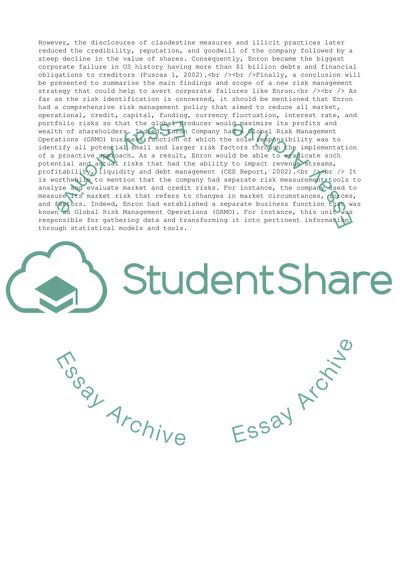Cite this document
(Risk Management: Major Lose in ENRON Case Study, n.d.)
Risk Management: Major Lose in ENRON Case Study. Retrieved from https://studentshare.org/management/1745872-risk-management-and-major-lose-in-enron-and-how-to-avoid-it-in-the-future
Risk Management: Major Lose in ENRON Case Study. Retrieved from https://studentshare.org/management/1745872-risk-management-and-major-lose-in-enron-and-how-to-avoid-it-in-the-future
(Risk Management: Major Lose in ENRON Case Study)
Risk Management: Major Lose in ENRON Case Study. https://studentshare.org/management/1745872-risk-management-and-major-lose-in-enron-and-how-to-avoid-it-in-the-future.
Risk Management: Major Lose in ENRON Case Study. https://studentshare.org/management/1745872-risk-management-and-major-lose-in-enron-and-how-to-avoid-it-in-the-future.
“Risk Management: Major Lose in ENRON Case Study”. https://studentshare.org/management/1745872-risk-management-and-major-lose-in-enron-and-how-to-avoid-it-in-the-future.


